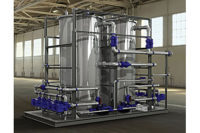Mergers, acquisitions and partnerships are risky endeavors for managers, as well as workers. Sometimes these transactions favor one group over another, or end up being disastrous for both groups. Other times, however, the deal turns out great for everyone.
A good example of the latter is the October 2015 agreement between Mitsubishi Heavy Industry Group and Mahindra & Mahindra Ltd. (M&M) that gives M&M a one-third ownership share of Mitsubishi Mahindra Agricultural Machinery Co. Ltd. (MMAM). Founded in 1980, the company designs and manufactures a wide range of agricultural machinery, such as tractors, combine harvesters and rice transplanters.
Before the agreement, the company focused primarily on serving Japan. Today, MMAM has the resources to compete in the global agricultural machinery marketplace. Along with the technology and brand power of majority-owner Mitsubishi Heavy Industry Group (one of the world’s leading heavy machinery manufacturers), the company has access to M&M’s extensive sales network in India, China and the United States.
Equally beneficial is the company’s concurrent engineering approach to product development, which was implemented at MMAM’s main plant in Matsue, Japan, in 2013. Concurrent engineering requires products to be designed and developed simultaneously, rather than consecutively, to shorten time to market and cut production costs.
XVL Studio software has enabled the company to effectively implement this methodology. Made by Lattice Technology Inc., the software turns 3D design data into interactive 3D manufacturing data.
Prior to using XVL Studio, an MMAM engineer would check the part geometry from blue prints and simulate the order of the assembly process based on his experience. He would then specifically define the assembly process and develop work instructions.
With XVL Studio, an engineer directly creates digital mock-ups and technical illustrations of parts from 3D data. He then digitally creates the assembly process with these parts, including verifying the tooling and jigs needed for assembly based on actual part geometry. If a problem arises during the process, he can easily highlight any change to ensure that downstream documentation has the proper updates.
The software lets MMAM engineers easily attach assembly instructions to part geometry models and animations. Instructions can be created in Excel, an interactive Web page or a browser-based Windows application. When an engineer selects a listed part name in Excel-based instructions, the part is automatically highlighted in the accompanying 3D model.
Plant managers especially like the XVL’s small file size, which is typically only 0.5 percent of the native CAD model size but still maintains part accuracy. This format allows engineers to design large assemblies with thousands of parts on standard desktop and laptop PCs, or mobile devices like the Apple iPad. It also lets users create enhanced models that include animations and annotations.
Another feature MMAM engineers like is called Snapshot. It lets users save view parameters (orientation, layout and camera angle) of a 3D model or restore the model’s position with a single click.
Lattice recently released Lattice3D Studio version 13.1, which lets engineers also create electrical routing representations in 3D of wires, cables, harnesses and connectors. For more information on 3D modeling software, call 720-330-3197 or visit www.lattice3d.com.




